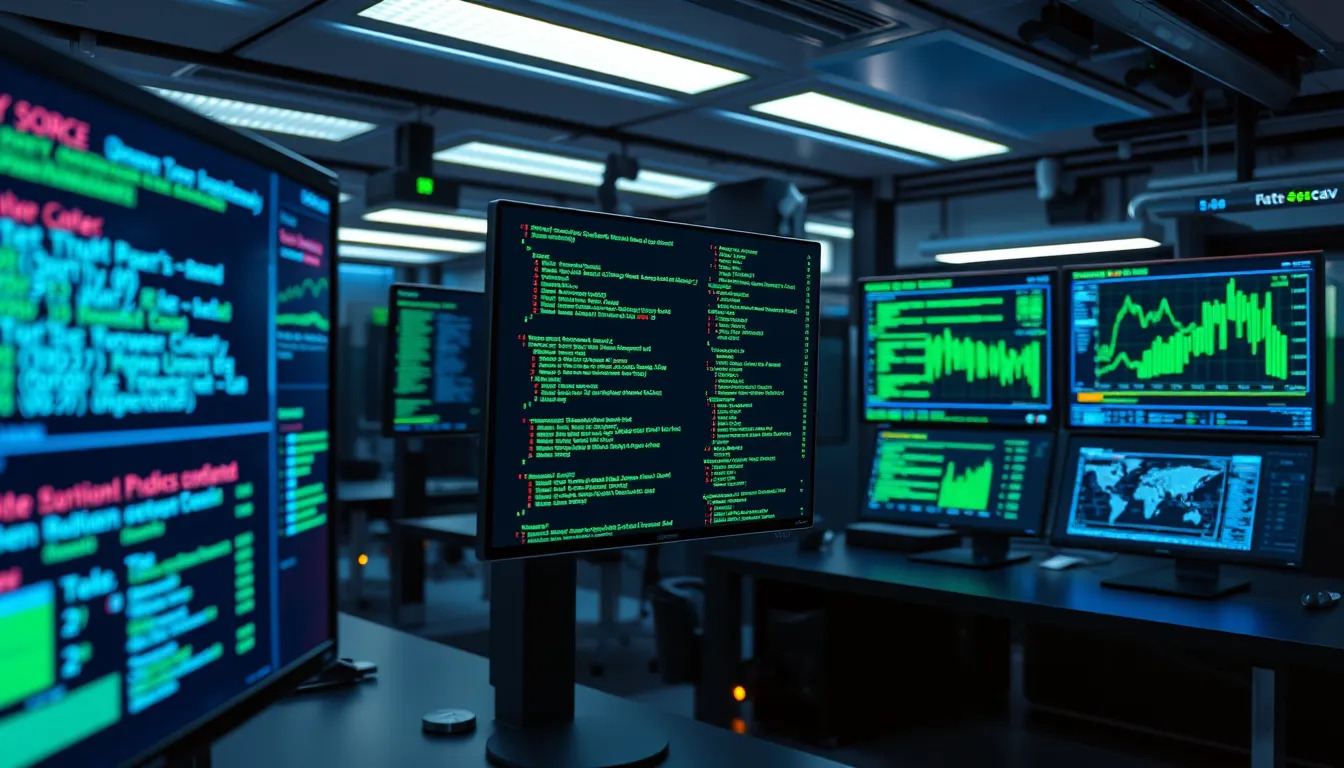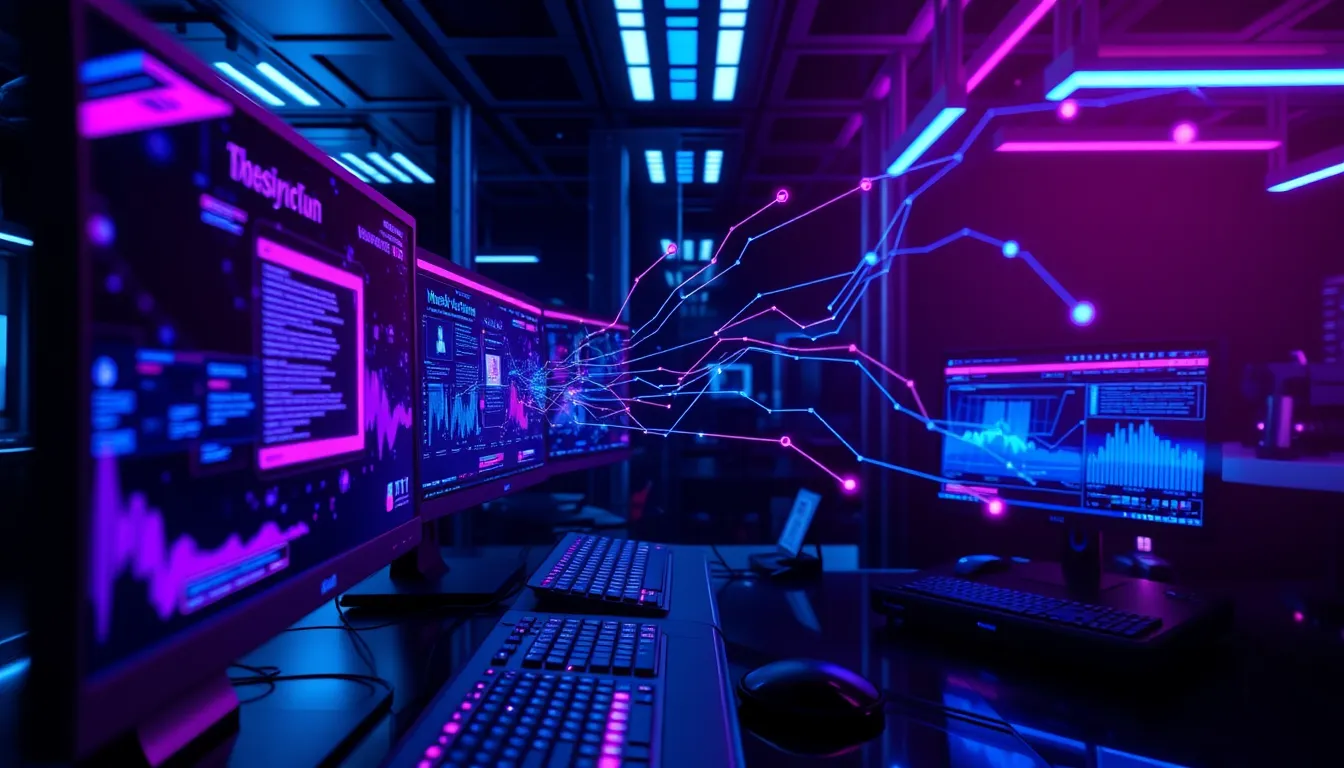Now Reading: Innovative OpenAI Open Source: Accelerate AI Innovation
-
01
Innovative OpenAI Open Source: Accelerate AI Innovation
Innovative OpenAI Open Source: Accelerate AI Innovation

Innovative OpenAI Open Source: Accelerate AI Innovation
In a bold strategic move shaped by evolving economic forces and a profound vision for technology democratization, OpenAI has introduced its first open-source model. This decisive action not only challenges longstanding industry norms but also signals a renewed commitment to accelerating AI innovation through openness and collaboration. Leveraging the power of OpenAI open source initiatives, the company is paving the way for a future where cutting-edge artificial intelligence is accessible to developers, businesses, and researchers worldwide.
Economic Impact and Democratization of AI
OpenAI’s groundbreaking decision to release an open-source model comes at a time when market pressures and cost considerations are reshaping the AI landscape. This initiative represents more than a technical milestone; it reflects a strategic recalibration aimed at addressing the dual imperatives of economic efficiency and widespread technology access. The open-source release is designed to:
- Democratize access to state-of-the-art AI technology
- Enhance collaborative development among researchers, developers, and businesses
- Serve as a catalyst for economic growth within the technology sector
By removing traditional access barriers, OpenAI is fostering an ecosystem where innovation is not confined to a select few but is open to a global community. The democratization of AI can lead to reduced development costs, spur competition, and ultimately drive the creation of new market opportunities. Furthermore, this strategic move is expected to stimulate economic benefits by enabling startups and established corporations alike to experiment, iterate, and improve upon AI models at a significantly lower cost.
The economic implications extend beyond immediate financial gains. By nurturing a collaborative environment, OpenAI’s open-source approach is likely to accelerate the pace at which new ideas are generated and applied, leading to transformative innovations that benefit sectors such as healthcare, finance, education, and transportation. Open-source AI models can also lead to the development of specialized applications tailored to niche industry needs, which in turn fuels job creation and economic diversification on a global scale.
Additionally, the release aligns with the broader trend of digital transformation across industries. As more businesses migrate to AI-driven models, the open-source approach serves as a blueprint for sustainable growth. By encouraging widespread participation in the developmental process, OpenAI not only enhances the quality of its models through community contributions but also helps set new benchmarks for transparency and accountability in AI research. This fosters a healthier, more competitive marketplace where innovation is continuously redefined.
How OpenAI’s Open Source Model Accelerates AI Innovation
- Rapid Iteration and Improvement: The collaborative nature of open-source projects enables rapid iteration. As developers and researchers from around the world contribute their unique perspectives and expertise, AI models are continuously refined. This rapid cycle of testing, feedback, and improvement leads to more robust, accurate, and adaptable AI systems.
- Broader Testing and Validation: By exposing AI models to a wide array of real-world applications and diverse data sets, the open-source model ensures thorough testing and validation. This extensive evaluation process helps uncover potential limitations and biases, ultimately resulting in more resilient and universally applicable AI solutions.
- Balanced Approach to Profitability and Progress: OpenAI’s open-source initiative demonstrates that it is possible to strike a harmonious balance between profitability and technological advancement. Collaborative development reduces R&D costs while fostering innovations that may exceed the capabilities of a proprietary approach. This balance not only benefits the company but also contributes to the broader technological ecosystem by sharing valuable insights and resources.
- Enhanced Transparency and Trust: Transparency is paramount in building trust in AI systems. By openly releasing their models, OpenAI invites the global community to scrutinize, test, and improve upon its innovations. This level of openness helps demystify AI technology, making it more accessible and understandable, which is crucial in a time when ethical and operational concerns about AI are increasingly in the public eye.
- Acceleration of Technological Progress: Open-source models provide a dynamic platform for continuous improvement. With input from a diverse community, innovations that might take years to develop within a closed system can now emerge in a fraction of the time, paving the way for more rapid technological evolution and practical applications.
This multifaceted approach not only promotes technical rigor but also fosters an environment of shared learning and innovation. As a result, OpenAI’s decision to go open source is poised to propel significant advancements in AI research and application.
The Broader Impacts of Open Source in the AI Ecosystem
The open-source movement in artificial intelligence is not new, yet its implications have grown more profound with each technological breakthrough. Historically, open-source projects have driven some of the most significant advancements in technology, from operating systems to web development frameworks. OpenAI’s commitment to open source continues this tradition in the AI domain by providing a robust, transparent foundation for further innovation.
Fostering an Inclusive Global Community
By embracing an open-source philosophy, OpenAI is actively encouraging participation from experts across various disciplines and geographies. This inclusivity ensures that the development of advanced AI models is not monopolized by a handful of technologically advanced nations or corporations. Instead, a diverse community of researchers and developers can collectively address challenges such as algorithmic bias, data privacy, and ethical AI usage. The resulting blend of insights and experiences enriches the AI landscape, leading to more generalizable and equitable technological solutions.
Advancing Research and Development in AI
Open-source projects have the inherent advantage of connecting theory with practice. In AI research, theoretical breakthroughs often need practical validation, and an open-source platform provides the perfect testing ground. Developers and researchers can experiment with modifications and novel approaches, thus accelerating the translation of academic research into industrial applications. Moreover, the open exchange of ideas helps standardize best practices, which can elevate the quality and reliability of AI technologies across the board.
Encouraging Ethical and Responsible AI
Transparency is a critical component in ensuring ethical AI development. OpenAI’s decision to adopt an open-source model is also a commitment to accountability. When the inner workings of AI systems are open for inspection, it becomes easier to identify and mitigate potential ethical concerns such as data misuse, bias in decision-making, and unintended consequences. This transparency is a crucial step toward fostering public trust in AI—a trust that is essential for the widespread adoption of these technologies in various sectors.
Catalyzing Innovation in Underserved Markets
One of the most exciting prospects of the open-source approach is its potential to democratize AI in underserved markets. Startups, small businesses, academic institutions, and even hobbyist developers now have access to state-of-the-art AI models that were once the exclusive domain of large technology firms. This democratization can significantly level the playing field, spurring innovation in regions and sectors that have historically lacked access to advanced technological tools. In turn, this can lead to breakthroughs in addressing local challenges through tailored AI solutions, ranging from agriculture and education to local government and community services.
Challenges and Future Opportunities
While the benefits of OpenAI’s open-source initiative are substantial, the transition to a more open model is not without its challenges. Open-source projects require robust governance frameworks to manage contributions effectively, maintain code quality, and ensure compliance with ethical standards. Balancing rapid innovation with the need for comprehensive validation is a delicate task, especially as the ecosystem scales.
Navigating Intellectual Property Concerns
One major challenge lies in navigating the complex landscape of intellectual property. Open-source licensing must be crafted carefully to protect the interests of developers while encouraging innovation. OpenAI’s approach in this regard is likely to set new precedents, providing a roadmap for how proprietary innovations can coexist with a culture of openness and knowledge sharing.
Ensuring Security and Quality Control
As more contributors engage with AI models, ensuring the security and integrity of the code becomes paramount. Open source inherently invites external scrutiny, which is beneficial for quality control; however, it also raises concerns regarding vulnerabilities and misuse. OpenAI will need to implement rigorous testing protocols and security audits to maintain the trust of the community and safeguard against potential threats.
Future Opportunities for Collaborative Innovation
Looking ahead, the possibilities for collaborative AI development are vast. OpenAI’s open-source model is likely to spur the formation of new alliances between academia, industry, and public institutions. These partnerships can lead to groundbreaking innovations, as diverse teams work together to solve complex challenges. Additionally, the shared knowledge base established through open collaboration could accelerate progress in emerging fields such as quantum computing, neuromorphic engineering, and artificial general intelligence (AGI).
One can anticipate that as more contributors work on refining the open-source model, new applications and methodologies will emerge, driving the evolution of AI technology. The venture into open source is not just a strategic move for OpenAI—it is a transformative step that could redefine how AI research and development are conducted in the years to come.
The Future of AI Collaboration and Innovation
The initiative to open source AI models marks a significant turning point in the collaborative development of technology. The fusion of open access with cutting-edge research provides the ideal environment for rapid advancements. As the global AI community embraces this model, the following trends are expected to gain momentum:
- Increased cross-disciplinary research that integrates insights from computer science, cognitive science, ethics, and data analytics
- More agile development processes where experimental AI models are iteratively tested and improved through real-world applications
- Enhanced regulatory frameworks that balance innovation with the need for ethical oversight and accountability
By fostering a culture of openness and shared learning, OpenAI is well positioned to become a central hub in a global network of AI research and development. This collaborative ecosystem is likely to yield solutions that not only address current technological challenges but also anticipate future needs in an increasingly complex digital landscape.
Conclusion
In summary, OpenAI’s transition to an open-source model represents a transformative moment for the AI sector. With a focus on democratizing technology, accelerating innovation, and fostering global collaboration, this initiative sets a new benchmark in the competitive landscape of artificial intelligence. Open source is more than a technical strategy—it is a philosophy that champions transparency, inclusivity, and shared progress.
As economic forces and market dynamics continue to evolve, the long-term impact of this move is poised to be profound. By lowering barriers to entry and encouraging widespread participation, OpenAI is not only reshaping the AI industry but also unlocking new avenues for economic growth and innovation. The path ahead is filled with challenges, including the management of intellectual property, quality control, and security concerns. However, the collaborative spirit inherent in open-source projects offers a promising framework for navigating these complexities.
For those eager to delve deeper into the subject, further insights and detailed analysis are available on our AI research page at Internal Link or directly on OpenAI’s Official Site. The future of AI is being written collaboratively, and OpenAI’s open-source initiative is a pivotal chapter in that ongoing story. Embrace the change, join the conversation, and be a part of the acceleration towards a more innovative, inclusive, and transparent era of artificial intelligence.
In conclusion, the OpenAI open source approach is not merely a technical development—it is a visionary step that promises to catalyze industry-wide transformation. By harnessing the collective intelligence of a global community, OpenAI is accelerating progress, driving economic growth, and setting a sustainable model for the future of AI innovation. The open-source journey has just begun, and its potential to revolutionize the technology landscape is both immense and inspiring.

























